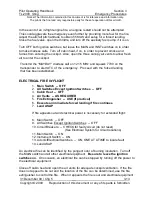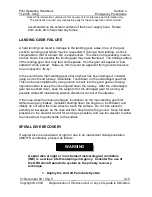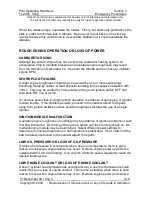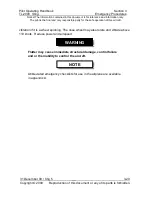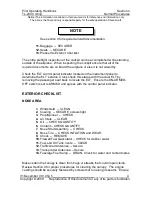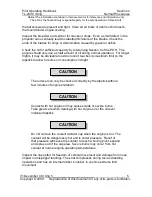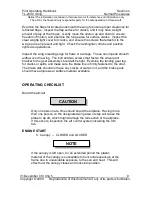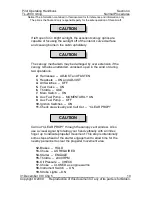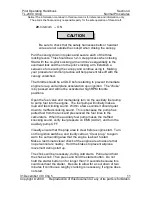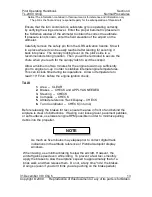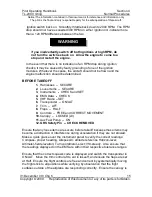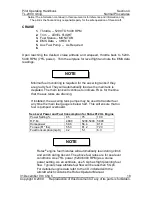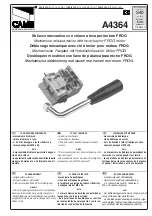
Pilot Operating Handbook
Section 4
TL-2000
Sting
Normal Procedures
Notice! The information contained in this document is for reference and information only.
The pilot is the final and only responsible party for the safe operation of this aircraft.
31 December 09 / Chg 5_____________________________________________7
Copyright © 2009 Reproduction of this document or any of its parts is forbidden.
13.
Under wing Inspection Ports – SECURE / CHECK CONTINUITY
14.
Pitot Tube -- SECURE - CHECK PITOT / STATIC OPENINGS
15.
Tie Down Strap -- REMOVE
16.
Wing Tip Cover and Enclosed Lights -- CHECK
17.
Aileron, Tab, and Hinges -- CHECK
18.
Flap and Hinges -- CHECK
After checking the fuel quantity and that the correct fuel type (color) is on board,
ensure the fuel cap is securely in place by inserting the cap back into the filler
neck so that it lies flush with the rim and then press the small locking tab back
into place. Be sure that the tab is aimed aft to the airstream. Examine the
landing gear leg for cracks or splits, and make sure the brake line is firmly
fastened to the strut. The brake disk should not have any cracks or warps in it,
and the brake pads should have ample pad material remaining.
The bolt and two screws that fasten the wheel pant bracket to the gear assembly
should all be tight. Confirm that the grounding wire attached inboard to the right
gear assembly is securely fastened. It should make sufficient contact with the
ground and should be tightly woven without any fraying.
If the grounding wire is worn, additional length of wire is available
by simply extending it from inside the fuselage.
Inspect the wing’s leading edge for flaws or dents. These can impede
smooth airflow over the wing. Inspect the primary control connections to
the ailerons which can be seen in the clear under-wing inspection ports.
These connections assure aileron continuity and are vital for aircraft
control. Ensure the pitot tube is secure and clear of obstructions as well as
the small static holes that encircle the pitot tube. Inspect the clear wing tip
light cover for cracks, and ensure the screws that attach it to the wing tip
cover are all present and tight.
Gently move the aileron up and down to ensure freedom of motion, and
examine the hinges for cracks. Examine the flap slot located underneath
the wing to ensure no debris and proper clearance for the retracted flaps.
Inspect the flap surface for cracks in the composite surface at the hinges
caused by over-stress from air loads occurring above the extension
airspeed limits, and that the flap mechanism has a slight amount of play.
NOTE

